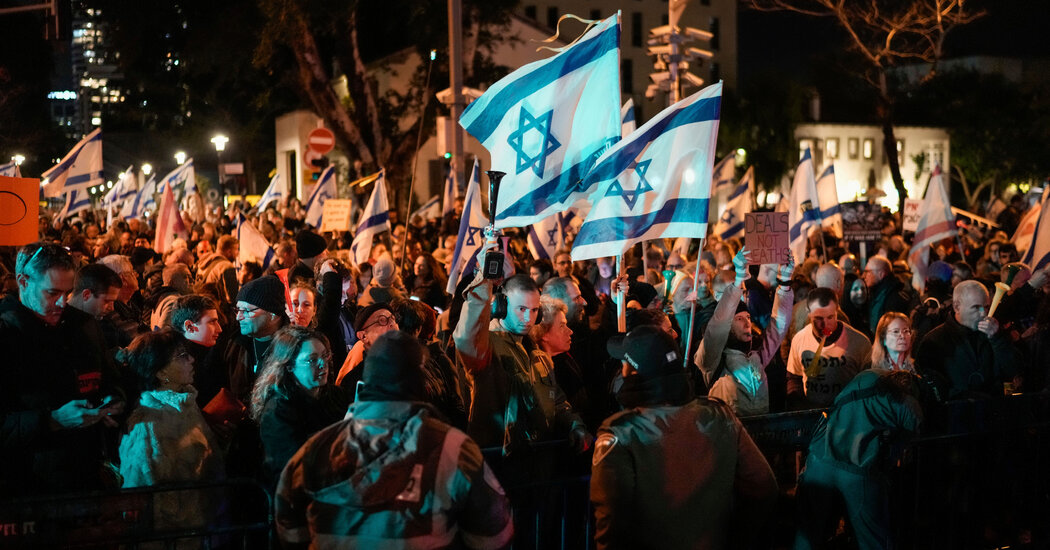Thousands of antigovernment protesters on Saturday filled a central Tel Aviv thoroughfare, the same street where demonstrations riled the nation before the start of the Israel-Hamas war, in the largest show of anger toward Prime Minister Benjamin Netanyahu in months.
In the immediate aftermath of the Hamas-led attacks on Oct. 7, in which some 1,200 people were killed, according to Israeli officials, the nation was in shock and the antigovernment protests were put on pause. The protesters said at the time that they felt a need to be unified as a nation, and many demonstrators were called up to the military reserves or volunteered to help the war effort.
But as the war has passed the four-month mark, protests against the government have been strengthening. On Saturday, calls for an immediate election were heard above a deafening din of air horns. A red flare was lit in the middle of a drum circle that beat out marching tunes. Flag-wielding demonstrators stared down half a dozen police officers on horseback.
“The people need to rise up, and the government needs to go,” said Yuval Lerner, 57, referring to Mr. Netanyahu’s right-wing governing coalition. He said that even before the war, he had lost confidence that the government had the nation’s best interest at heart.
Large antigovernment protests over plans to weaken the nation’s judiciary were once a routine occurrence in Israel before the outbreak of war. Then, tens of thousands of protesters gathered on Kaplan Street in Tel Aviv, the same street as Saturday night’s protest.
Karen Saar, 50, who wore a sweatshirt emblazoned with the words “deposition now,” said that the return to Kaplan Street was symbolic. “It’s the Kaplan protests,” she said, repeating the phrase used locally. “We’ve returned the protest movement to the place where it was before the tragedy and the war.”
The protests against Mr. Netanyahu and the government are separate from the increasingly divisive public debate over the course of action in Gaza regarding the hostages captured by Hamas and other groups on Oct. 7. More than 130 hostages remain in the enclave, including at least 30 who are believed to be dead, according to the Israeli security services. Demonstrations demanding the government prioritize their release have also occurred regularly.
On Saturday, one antigovernment protester said he felt the time was right to return to the streets. Shahar Danziger, 45, who carried a flag for Brothers in Arms, a grass-roots organization made up of Israeli military veterans and reservists who shifted to help those affected by the war, said that until recently, it was hard to return to protesting when some of his colleagues were serving as reservists.
At first “we set up to help during wartime,” he said. “But now it’s time to demonstrate.”

